Mark Your Calendar for ACA Open Enrollment—Here's What You Need to Know
Understanding the ACA Open Enrollment Window

ACA open enrollment is the annual period when Americans can sign up for or change their health insurance plans through the Health Insurance Marketplace. If you're looking for quick information about the upcoming enrollment period, here's what you need to know:
| ACA Open Enrollment Key Facts |
|---|
| 2025 Enrollment Period: November 1, 2024 - January 15, 2025 |
| Deadline for January 1 Coverage: December 15, 2024 |
| Deadline for February 1 Coverage: January 15, 2025 |
| Who Can Enroll: U.S. citizens and lawfully present immigrants not enrolled in Medicare |
| Financial Help: Nearly 9 in 10 enrollees qualify for assistance |
| Affordability: 4 in 5 people can find plans for $10/month or less after subsidies |
The Affordable Care Act (ACA) created this annual opportunity to ensure Americans have access to comprehensive health coverage regardless of pre-existing conditions. Missing this critical window means you'll likely need to wait until the following year to enroll unless you experience a qualifying life event.
During the last open enrollment period, a record 21.4 million Americans signed up for coverage through the Marketplace, demonstrating the growing importance of these plans for individuals and families seeking affordable healthcare options.
I'm Kelsey Mackley, an insurance specialist at Kelmeg & Associates, Inc. with extensive experience helping clients steer ACA open enrollment to find the right coverage for their unique healthcare needs and budgets. My expertise includes identifying subsidy eligibility and explaining complex insurance concepts in simple terms so you can make confident decisions about your health coverage.

Key Dates for ACA Open Enrollment 2025
The ACA open enrollment window for 2025 coverage kicks off November 1, 2024, and runs through January 15, 2025. Think of this period as your golden opportunity to secure health insurance if you don't have coverage through an employer.
These dates aren't just suggestions—they're critical deadlines that determine when your health protection begins. Missing them could leave you uninsured for an entire year, which is a risk nobody should take:
- November 1, 2024: The doors open! You can start comparing plans and submitting applications
- December 15, 2024: This is your must-meet deadline for coverage starting January 1
- January 15, 2025: The final chance to enroll for 2025 (but your coverage won't start until February 1)
With a record 21.4 million Americans enrolling during the last period, it's clear that more people are finding the value of Marketplace plans. Let's make sure you don't miss out!
Federal Marketplace Timeline for ACA Open Enrollment
The federal Marketplace follows a reliable rhythm each year. Here's your roadmap to steer the ACA open enrollment season:
October is your preparation month—take time to review any notices about changes to your current plan. When November 1st arrives, you can dive into comparing your options and completing your application.
December 15th marks that crucial cutoff for January coverage. Your current year's coverage wraps up on December 31st, and if you've enrolled by the December deadline, your new protection kicks in the very next day.
If you miss that first deadline, you still have until January 15th to secure coverage, though it won't begin until February 1st.
Already have a Marketplace plan? You'll typically be automatically re-enrolled if you take no action. But I strongly encourage you to actively review your options—premiums, doctor networks, and benefits can shift significantly from year to year. A quick review could save you hundreds or even thousands of dollars.
State-Based Marketplace Variations to Watch
While most Americans use the federal Marketplace at Healthcare.gov, several states march to their own beat with unique exchanges and sometimes different deadlines.
Here in Colorado, we use Connect for Health Colorado, our state-run Marketplace that follows the federal timeline but offers some Colorado-specific plans and assistance programs.
| State | Marketplace Name | Enrollment Start | Enrollment End | Website |
|---|---|---|---|---|
| Federal | HealthCare.gov | Nov 1, 2024 | Jan 15, 2025 | Healthcare.gov |
| Colorado | Connect for Health Colorado | Nov 1, 2024 | Jan 15, 2025 | ConnectforHealthCO.com |
| California | Covered California | Nov 1, 2024 | Jan 31, 2025 | CoveredCA.com |
| New York | NY State of Health | Nov 1, 2024 | Jan 31, 2025 | NYStateofHealth.ny.gov |
Some states like California and New York are more generous with their deadlines, extending enrollment through January 31st. Virginia residents should note their state is transitioning to its own exchange platform in 2024, which might change how they enroll.
Always check your specific state's Marketplace website for the most up-to-date information. And if you're in Colorado, we at Kelmeg & Associates are here to help you steer Connect for Health Colorado at no additional cost to you.

Eligibility & Special Enrollment Periods
Finding your way through the health insurance maze can feel overwhelming, but understanding who can sign up during ACA open enrollment – and what to do if you miss it – can make all the difference in securing the coverage you need.
Who is Eligible to Enroll During ACA Open Enrollment?
Good news! The Health Insurance Marketplace welcomes most people living in the United States. To qualify for coverage during ACA open enrollment, you need to:
- Be a U.S. citizen or national, or have lawful presence status in the country. This includes green card holders, refugees, asylees, and those with valid visas.
- You must also live in the United States (not just visiting) and not be currently incarcerated.
One of the most important protections the Affordable Care Act provides is that insurance companies cannot deny you coverage or charge you more because of pre-existing health conditions. That nagging back pain or previous diagnosis? Not a problem when applying for coverage.
If you're a young adult under 26, you have the option to stay on your parents' health plan, giving you flexibility as you steer early adulthood. There's also no income ceiling that would make you ineligible for Marketplace plans – though your income does determine whether you qualify for financial help.
It's worth noting that if you're enrolled in Medicare, you're not eligible for Marketplace plans. Medicare has its own separate enrollment periods and coverage options.
For DACA recipients, the situation has been in flux. While there was a planned rule change to make DACA recipients eligible starting November 2024, recent legal challenges have put this on hold. If you're a DACA recipient, it's best to check the latest updates before attempting to apply.
Qualifying Life Events That Open a Special Enrollment Period
Life doesn't always follow a convenient November-to-January schedule. That's why Special Enrollment Periods (SEPs) exist – they're your safety net if you miss ACA open enrollment but experience a significant life change.
When you have what's called a Qualifying Life Event (QLE), a 60-day window opens for you to enroll in a new health plan outside the standard enrollment period. This two-month timeframe is crucial – miss it, and you might have to wait until the next open enrollment.
Major life changes that qualify include getting married or divorced, having or adopting a child, or experiencing a death in the family that changes your insurance needs.
Coverage changes also trigger an SEP, such as losing your job-based insurance, aging off your parent's plan when you turn 26, or losing eligibility for Medicaid or CHIP.
Moving to a new area where different health plans are available counts too, whether you're relocating for a job, moving to or from school, or making any move that crosses into a new county or ZIP code with different available plans.
Income fluctuations that affect your subsidy eligibility can also open an enrollment window, as can citizenship status changes like becoming a U.S. citizen or gaining lawful presence status.
You'll need to provide documentation proving your qualifying event. For example, if you've lost your employer coverage, you'll need a letter showing when that coverage ended. Being prepared with these documents will help your enrollment process go smoothly.
If you're facing any of these situations and need guidance navigating your special enrollment options, reaching out to a knowledgeable broker can save you time and potential headaches. More info about health insurance application

How to Apply & Compare Plans
Navigating ACA open enrollment doesn't have to feel overwhelming. Think of it as shopping for any important purchase—you just need the right information and a bit of guidance to make a confident choice. Let's walk through the process together.
Gather Documents & Start Your Marketplace Application
Before sitting down to apply, take a few minutes to collect everything you'll need. This simple prep step can save you loads of frustration later!
For everyone in your household needing coverage, you'll want:
- Your Social Security numbers (or document numbers if you're a legal immigrant)
- Income information like pay stubs, W-2 forms, or tax returns
- Policy numbers for any health insurance you currently have
- Details about any job-based coverage available to your family
With these documents in hand, you're ready to apply. You've got several convenient options:
You can apply online through Healthcare.gov or your state's Marketplace website—perfect for night owls who want to compare plans in their pajamas. Prefer talking to a real person? Just call the Marketplace at 1-800-318-2596. Need face-to-face help? That's where we shine at Kelmeg & Associates, Inc. We can walk you through every step as your personal guides, at absolutely no cost to you.
The application does double-duty: it confirms you're eligible for Marketplace coverage and calculates any financial help you might qualify for. Our Colorado clients find this especially helpful, as navigating the state-specific options can sometimes feel like solving a puzzle. We're here to make it simple— find more about the application process here.
Bronze vs Silver vs Gold vs Platinum: Which Metal Tier Fits?
When you start seeing plans labeled as metals, don't worry—this isn't about jewelry! These metal tiers simply show how you and your insurance company split the costs.

Bronze plans are like buying a basic car—lower monthly payments (premiums), but you'll pay more when you actually use it. The insurance covers about 60% of costs, while you handle the other 40%. These work well if you're generally healthy and want protection mainly for worst-case scenarios.
Silver plans strike a nice balance—moderate monthly premiums with moderate out-of-pocket costs when you need care. The plan pays about 70%, leaving you with 30%. Here's a little-known secret: if your income qualifies you for extra savings (cost-sharing reductions), they only apply to Silver plans, potentially making them an incredible value.
Gold plans cost more each month but cover more of your care—about 80% of costs, with you paying 20%. If you visit doctors regularly or manage ongoing conditions, this higher premium might actually save you money in the long run.
Platinum plans have the highest monthly premiums but the lowest costs when you need care. The plan covers about 90%, with you responsible for just 10%. These make sense for people who know they'll need extensive medical care.
The right tier depends on both your budget and how much healthcare you typically use. It's like choosing between a high-deductible or low-deductible plan, but with more options to fit your specific situation.
Tools to Estimate Costs and Subsidies
The good news? You don't have to figure all this out on your own. The Marketplace offers helpful tools to estimate what you'll actually pay.
The Premium Tax Credit Calculator helps you see what financial help you might qualify for based on your income and family size. The Total Cost Estimator goes deeper, comparing plans based on both premiums and what you'd likely pay out-of-pocket given your typical healthcare needs. There's also a Provider Directory to check if your favorite doctors are covered in specific plans.
Here's something that surprises many people: nearly 9 out of 10 folks who enroll through the Marketplace qualify for financial help. Even better, 4 out of 5 can find plans for $10 or less per month after subsidies. These aren't small discounts—they can dramatically reduce what you pay.
To see what savings you might qualify for, try the official healthcare.gov cost calculator or give us a call at Kelmeg & Associates, Inc. We love helping people find they can afford much better coverage than they thought possible. After all, that's why we're here—to help you find the right coverage without the headaches.
Costs, Subsidies & Financial Assistance
Understanding the financial aspects of Marketplace plans is crucial for finding affordable coverage during ACA open enrollment. The good news is that many Americans qualify for significant financial assistance.

Premium Tax Credits
Let's talk money – specifically, how to save it on your health insurance. Premium Tax Credits (PTCs) are like a friendly discount that lowers your monthly premium payments. Thanks to the American Rescue Plan Act and Inflation Reduction Act, these subsidies have been expanded through 2025, making coverage more affordable than ever before.
What makes these credits so helpful? For starters, they cap your premium contribution for a benchmark Silver plan at no more than 8.5% of your household income. If you're earning less, that cap drops even lower – sometimes resulting in plans with $0 premiums! Yes, you read that right – potentially free monthly premiums.
You have options for how to use these credits too. Most folks apply them directly to their monthly premium (like an instant discount), but you can also claim them when filing your taxes if that works better for you. Your eligibility is based on what you expect to earn during the coverage year, not what you made in the past.
For 2025 coverage, you might qualify for substantial help if your household income falls between 100% and 400% of the Federal Poverty Level. But here's the really good news – even if your income is above that 400% threshold, you may still qualify for assistance that caps your premium at 8.5% of your income. That's a huge improvement from previous years!
Cost-Sharing Reductions
Premium help is just the beginning. Cost-Sharing Reductions (CSRs) are the unsung heroes that help lower your out-of-pocket costs – things like deductibles, copayments, and coinsurance. Think of them as the cherry on top of your health insurance sundae, but they come with two important conditions:
First, you need to qualify based on income (generally between 100-250% of the Federal Poverty Level). Second, you must choose a Silver plan – these reductions don't apply to Bronze, Gold, or Platinum plans.
Here's where it gets interesting: CSRs essentially upgrade your Silver plan to function more like a Gold or Platinum plan while still paying Silver-level premiums. It's like getting a business-class seat while paying for economy! This makes Silver plans particularly valuable if you're eligible for these reductions.
Medicaid and CHIP Alternatives
Depending on your income and family size, you or your children might qualify for free or very low-cost coverage through Medicaid or the Children's Health Insurance Program (CHIP).
Here in Colorado, Medicaid expansion has increased eligibility to adults with incomes up to 138% of the Federal Poverty Level. The best part? When you complete your Marketplace application, you'll automatically be checked for Medicaid and CHIP eligibility – no separate application needed.
Unlike Marketplace plans, Medicaid and CHIP enrollment is available all year round, not just during ACA open enrollment. This provides a crucial safety net for those who might experience income changes throughout the year.
For Colorado neighbors with lower incomes, we can help determine if you qualify for these programs. More info about Low Income Health Insurance
State-Specific Financial Assistance
Colorado residents get an extra advantage! Beyond the federal subsidies, Connect for Health Colorado provides additional state subsidies that further reduce costs for eligible residents.
For the most accurate picture of what financial assistance you qualify for, working with a licensed broker who understands both federal and state programs makes all the difference. At Kelmeg & Associates, Inc., we provide this guidance at no cost to you – yes, completely free. We'll help you steer the sometimes confusing world of health insurance subsidies to make sure you're getting every discount you're entitled to.
The official healthcare.gov cost calculator is a good starting point, but nothing beats personalized guidance from someone who knows the ins and outs of Colorado's specific programs.
What if You Miss Open Enrollment?
Missing the ACA open enrollment deadline can feel like a major setback in your healthcare journey, but don't worry – you're not automatically left without options for an entire year. Several pathways to coverage remain available even after the standard enrollment window closes.
Special Enrollment Period Eligibility
Life happens, and the healthcare system recognizes this reality. If you've recently experienced a qualifying life event – like getting married, having a baby, or losing previous coverage – you likely qualify for a Special Enrollment Period. This gives you a 60-day window to enroll in a Marketplace plan outside the standard timeframe. Think of it as a second chance prompted by your changing circumstances.
Many people don't realize how many situations qualify as life events. That job change, recent move, or even certain income adjustments might open this door for you. It's always worth checking rather than assuming you're out of luck.
Medicaid and CHIP
One of the most helpful aspects of Medicaid and the Children's Health Insurance Program (CHIP) is their year-round enrollment. These programs don't limit sign-ups to specific periods, making them valuable safety nets if your income falls within qualifying ranges.
This is particularly good news for families with children, pregnant women, and those experiencing financial hardship. In many cases, coverage can begin retroactively from the month you applied or even earlier, ensuring you're not left with gaps in protection.
Short-Term Health Insurance Options
When other options aren't available, short-term health insurance plans can provide temporary coverage while you wait for the next ACA open enrollment period. Think of these as a healthcare bridge – not ideal for crossing long distances, but better than falling into the water.
In Colorado specifically, these plans come with important limitations. They can only last up to six months and cannot be renewed, making them truly a temporary solution. They typically don't cover pre-existing conditions, don't include all the essential health benefits required by the ACA, and often come with more exclusions and higher out-of-pocket costs. Perhaps most significantly, they don't qualify for the premium subsidies that make ACA plans affordable for many families.
While short-term plans can provide some peace of mind against unexpected medical emergencies, they should generally be considered a last resort rather than your go-to solution.
State Individual Mandate Considerations
The landscape of health insurance requirements varies by state. While the federal tax penalty for going without coverage was eliminated in 2019, several states have implemented their own individual mandates with financial consequences for being uninsured. Currently, California, Massachusetts, New Jersey, Rhode Island, and the District of Columbia maintain state-level penalties.
Colorado residents don't currently face a state mandate penalty, but maintaining continuous coverage remains important for both your financial security and access to consistent healthcare services. Medical bills remain the leading cause of personal bankruptcy in America – a sobering reminder of why coverage matters beyond just avoiding penalties.
Planning for Next Year
If you've missed the enrollment window and none of the above options fit your situation, it's wise to begin planning for the next ACA open enrollment period. Mark your calendar for October 2025 to give yourself plenty of time to research plans and prepare documentation.
In the meantime, you can explore several resources to help manage healthcare needs: community health centers that offer sliding-scale fees based on income, prescription assistance programs for essential medications, telehealth services for basic care, and setting aside emergency funds for potential medical expenses.
At Kelmeg & Associates, Inc., we understand how stressful healthcare gaps can be. We're here to help you steer these complex situations and find the best solution for your specific circumstances. Sometimes the answer isn't obvious, but with a little expert guidance, we can often uncover options you might not have considered on your own.
Frequently Asked Questions about ACA Open Enrollment
When exactly is ACA Open Enrollment and when does coverage start?
If you're marking your calendar for ACA open enrollment, circle these dates in red: November 1, 2024, through January 15, 2025. This is your window of opportunity to secure health insurance coverage for the coming year.
The timing of when you enroll affects when your coverage kicks in. Enroll by December 15, 2024, and your health plan will start protecting you on New Year's Day. Wait until after December 15, and your coverage won't begin until February 1, 2025. Think of December 15 as your "coverage before Christmas" deadline if you want your plan to start on January 1.
Most states follow this federal timeline, including our home state of Colorado with Connect for Health Colorado. That said, a few states with their own marketplaces (like California and New York) sometimes extend their deadlines a bit further, giving residents extra time to make this important decision. Always double-check your state's specific dates if you're not using the federal Marketplace.
Can immigrants or DACA recipients get Marketplace coverage in 2025?
The good news is that lawfully present immigrants can absolutely shop for health insurance during ACA open enrollment. This includes permanent residents with green cards, refugees and asylees, people with work visas, those with temporary protected status, and many other legal immigration statuses.
The situation for DACA recipients is more complicated. There was a plan to make DACA recipients eligible starting in November 2024, but recent court challenges have put this change on pause. If you're a DACA recipient, I recommend checking for the latest updates as we get closer to the 2025 enrollment period. The landscape is shifting, and we want to make sure you have the most current information.
While undocumented immigrants cannot purchase Marketplace coverage, they do have other options. They may qualify for emergency Medicaid services when needed, and they can purchase coverage directly from insurance companies outside the Marketplace.
Should I rely on automatic re-enrollment or shop each year?
While curling up with a good book might be better than comparing health insurance plans, I strongly recommend taking the time to actively shop during ACA open enrollment rather than letting auto-renewal do the work for you.
Think of it this way: auto-renewal is like having a backup parachute. It's nice to know it's there, but you'd rather not need to use it. Here's why shopping each year makes such a difference:
Your current plan might undergo significant changes in premiums or benefits. What was once your perfect plan might not be so perfect anymore. The subsidies you receive can fluctuate based on changes to the benchmark plan in your area, even if your income stays exactly the same.
Your favorite doctors or local hospital might leave your plan's network (or new ones might join). Insurance companies enter and exit the Marketplace yearly, sometimes bringing better options than what was previously available.
And let's not forget – your health needs evolve. The medication you didn't need last year might be essential now, or you might be planning for a procedure that would be better covered under a different plan.
The marketplace is getting more competitive each year. For 2025, a healthy 97% of HealthCare.gov consumers will have at least three insurance companies to choose from, up from 96% last year. More competition usually means better choices and potentially better values – but only if you take the time to look!
At Kelmeg & Associates, Inc., we help our Colorado clients review their options each year during ACA open enrollment. We'll help you find the most appropriate plan for your current needs and budget, without the headache of doing all the research yourself. And remember – our guidance comes at no extra cost to you.
Conclusion
Feeling a bit overwhelmed by all this ACA open enrollment information? Take a deep breath—you've got this, and we're here to help.
Health insurance doesn't have to be complicated when you break it down into manageable steps. Now that you understand the key dates, eligibility requirements, and financial assistance options, you're well-equipped to find coverage that works for your health needs and your wallet.
Let's recap what we've learned together:
November 1, 2024, is your starting line—the day when the Marketplace opens its doors for 2025 coverage. If you want your coverage to begin with the new year, aim to complete your enrollment by December 15, 2024. Missing that date isn't the end of the world, though—you'll still have until January 15, 2025, to secure coverage that starts February 1.
The financial picture is much brighter than many people realize. With nearly 9 in 10 Marketplace enrollees qualifying for some form of financial assistance, and 4 in 5 people finding plans for $10 or less per month after subsidies, affordable coverage is within reach for most Americans.
One of the most important things to remember? Don't just let your current plan auto-renew. Even if you love your coverage, taking the time to shop around could save you hundreds or even thousands of dollars. Plans, networks, and prices change every year—and so do your health needs.
And if life throws you a curveball and you miss the enrollment window? Don't panic. Special Enrollment Periods exist for qualifying life events like job changes, moves, marriages, and new additions to your family.
Here at Kelmeg & Associates, Inc., we've guided countless Colorado residents through the health insurance maze. Our team serves communities throughout Lafayette, Broomfield, Boulder, Adams County, and beyond—helping folks just like you find their way to the right coverage.
The best part? Our guidance comes at no additional cost to you. As licensed brokers, we're paid by the insurance companies, not by our clients. That means you get personalized support—from understanding your subsidy options to comparing plans to completing your application—without any consulting fees.
Why steer ACA open enrollment alone when you could have an experienced guide by your side? Reach out today, and let's work together to find health coverage that gives you both financial security and peace of mind.













